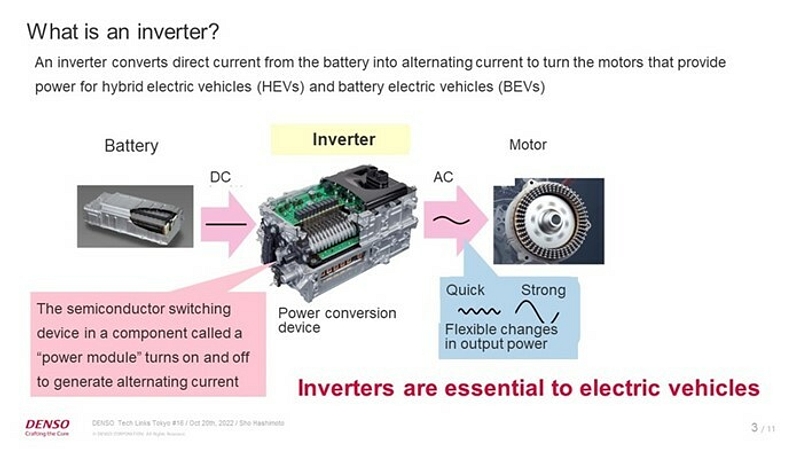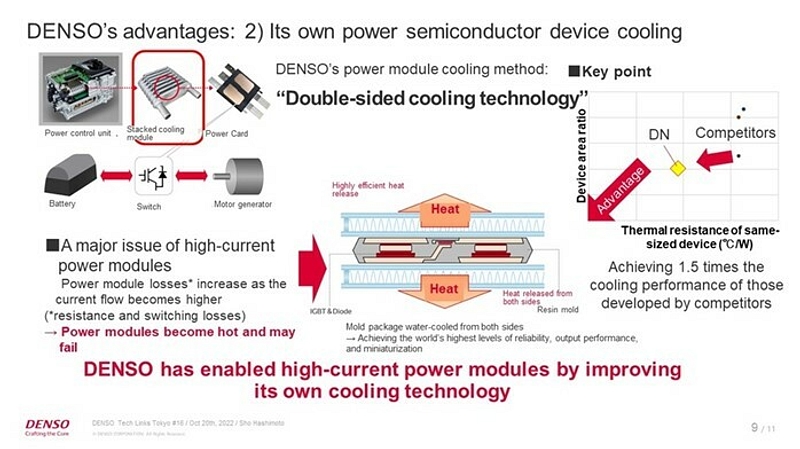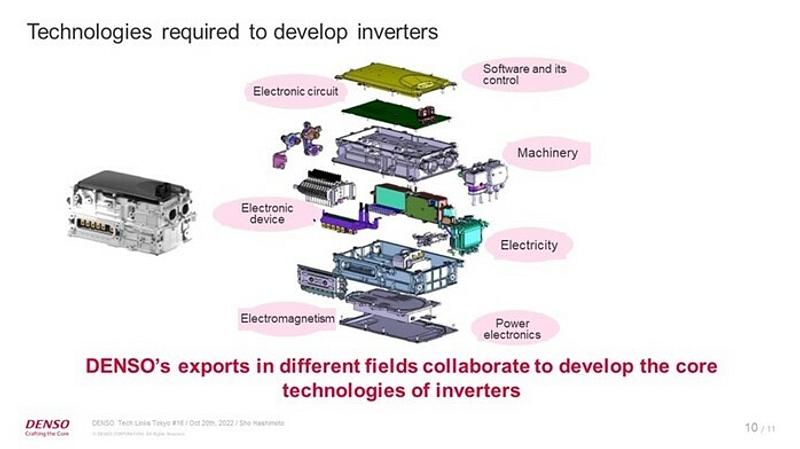How DENSO develops electrical inverters

IMPORTANT NOTE: While DENSO Aftermarket is proud to share technical knowledge and experience, please note that the technology mentioned in this article is original equipment (OE) technology and is not yet available in its aftermarket range.
DENSO began to mass-produce inverters in 1997 and by 2018, the company led the world with the largest share of 32% in the global inverter market and in 2020, annual production reached a high of 1.2 million units. Now, inverters designed and manufactured by DENSO are used by vehicle manufacturers around the world, including Toyota, Nissan and Hino for its commercial vehicles, as well as Ford and China FAW Group.
With the gathering pace of global EV production, what type of inverters should be developed?
All the energy used in an EV is provided by its battery, so this feature can cause concerns about its driving range because it will require a charging station before it runs out of power. As it takes at least 30 minutes, even with a rapid charger, to recharge an almost depleted battery, this may frustrate people who are used to a combustion engine powered vehicle. Therefore, reducing the electrical losses will make EVs more attractive.
These
losses are the amount of power that is not used for vehicle propulsion and
climate control, for example, and end up being wasted, of which, the inverter
accounts for a significant portion, and therefore must be reduced.
In a hybrid, the engine is the main power source and is supported by an electric
motor, whereas an EV uses an electric motor for its propulsion. The force to
rotate the wheels is called torque and the stronger the magnet of a motor, the
more torque is generated. Moreover, the greater the current in a motor, the
more torque is generated. This means that a large amount of current is required
to get an EV moving, so they need low-loss, high-current inverters.

Reducing power module losses
Power modules are the most critical components to develop low-loss inverters, so reducing power module losses, which account for about 90% of the inverter losses, is the biggest challenge. Many inverter manufacturers purchase commonly available power modules and integrate them into their inverters, but DENSO develops and produces its own, which, because of their shape are called ‘Power Cards’.
Recently, silicon carbide (SiC) power semiconductors have become widespread around the world and as they help to considerably reduce the losses in power modules compared with conventional silicon (Si) semiconductors, a growing number of electric vehicles are adopting them. DENSO also uses SiC power semiconductors as they can reduce electric power losses by as much as 7%.

A major issue for power modules that operate with high current is that the greater the current that flows in them, the more losses occur and excess heat generated, which in some cases leads them to fail.
To deal with these challenges, DENSO has used its own cooling technology for its ‘Power Card’ power module, which is tightly placed between two cooling devices designed to release heat from both of its sides. This cooling technology achieves 1.5 times the performance of those developed by other companies.

Another important element is the electric control unit (ECU) and DENSO’s ECUs have a circuit called a drive IC to switch power semiconductor devices on and off and these have the important functions to enable power semiconductor devices to deliver the required performance, while protecting them in the event of a failure.
DENSO develops drive ICs and motor control technology in-house to ensure that its inverters and motors function properly depending on vehicle operating conditions.

The technologies mentioned here are only part of those used in inverters, so experts in different fields need to collaborate with each other to develop them and ensure DENSO keeps leading the world in inverter technology.
Further details of the DENSO Aftermarket programme are available online at: www.denso-am.eu




















































